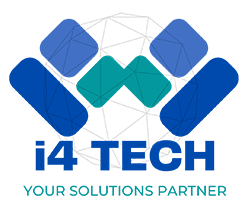From Beginner to Pro: A Step-by-Step Guide to Learning Web Development
In today’s digital world, web development is one of the most valuable skills you can learn. Whether you want to build your own website, start a freelance career, or land a job in tech, mastering web development opens up endless opportunities. At i4 Tech Integrated Services, we help aspiring developers navigate their learning journey with a structured, step-by-step approach.
If you’re ready to go from beginner to pro, follow this ultimate roadmap to mastering web development in 2025!
Step 1: Understand the Basics of Web Development
Before diving into coding, it’s important to understand how the web works. Learn about:
✅ Frontend Development – Designing what users see (HTML, CSS, JavaScript).
✅ Backend Development – Managing data, authentication, and logic (Node.js, Python, PHP).
✅ Databases – Storing and retrieving data efficiently (MySQL, MongoDB, Firebase).
🎯 Pro Tip: Start with the fundamentals and build a strong foundation before jumping into frameworks.
Step 2: Master HTML & CSS – The Building Blocks of the Web
HTML (HyperText Markup Language) structures web pages, while CSS (Cascading Style Sheets) makes them visually appealing.
📌 Key Topics to Learn:
✅ HTML tags & attributes (headings, images, links, forms).
✅ CSS styling (colors, layouts, grids, flexbox).
✅ Responsive design (media queries, mobile-first design).
🎯 Practice: Build small projects like a personal portfolio or a simple landing page.
Step 3: Learn JavaScript – Make Websites Interactive
JavaScript adds interactivity and dynamic elements to websites. It’s essential for frontend development.
📌 Key Topics to Learn:
✅ Variables, loops, and functions.
✅ DOM manipulation & event handling.
✅ ES6+ features (arrow functions, async/await).
🎯 Pro Tip: Start with vanilla JavaScript before moving to frameworks like React.js or Vue.js.
Step 4: Get Comfortable with Version Control (Git & GitHub)
Git is a version control system that allows developers to track changes, collaborate, and manage projects.
📌 What to Learn:
✅ Basic Git commands (commit, push, pull, merge).
✅ Creating and managing repositories on GitHub.
✅ Collaboration using branches and pull requests.
🎯 Practice: Contribute to open-source projects to gain real-world experience.
Step 5: Learn a Frontend Framework (React.js, Vue.js, or Angular)
Frontend frameworks help build fast and scalable web applications. React.js is one of the most popular choices.
📌 What to Learn in React.js:
✅ Components & props.
✅ React Hooks (useState, useEffect).
✅ API integration (fetch, Axios).
🎯 Pro Tip: Start by building a To-Do App or a Weather App with React.
Step 6: Dive into Backend Development (Node.js, Express.js, or Django)
Backend development is where the server-side logic happens. Node.js and Express.js are great choices for JavaScript developers.
📌 Key Topics to Learn:
✅ RESTful APIs & CRUD operations.
✅ Authentication & authorization (JWT, OAuth).
✅ Database management (SQL & NoSQL).
🎯 Practice: Create a simple API for user authentication.
Step 7: Work with Databases (MySQL, MongoDB, Firebase)
Databases store and manage data for web applications. Choose SQL (MySQL, PostgreSQL) or NoSQL (MongoDB, Firebase) based on your project needs.
📌 What to Learn:
✅ Creating & managing databases.
✅ Writing SQL queries & NoSQL documents.
✅ Connecting databases with backend applications.
🎯 Practice: Build a blog website with a database.
Step 8: Learn Deployment & Hosting
Once your web application is ready, you need to deploy it online.
📌 Key Deployment Platforms:
✅ Netlify & Vercel (Frontend deployment).
✅ Heroku, Render, or DigitalOcean (Backend deployment).
✅ AWS & Firebase (Cloud hosting).
🎯 Practice: Deploy a portfolio website to showcase your skills.
Step 9: Explore Full-Stack Development
Once you’re confident in both frontend and backend, you can become a full-stack developer.
✅ Learn MERN Stack (MongoDB, Express.js, React.js, Node.js).
✅ Work on real-world projects (E-commerce site, Chat App, Dashboard).
✅ Participate in hackathons & coding challenges.
🎯 Pro Tip: Build a portfolio of at least 3-5 projects to impress potential employers.
Step 10: Keep Learning & Stay Updated
Web development is constantly evolving. Stay ahead by:
✅ Following industry leaders & blogs.
✅ Learning new tools & technologies.
✅ Joining developer communities & attending tech events.
🎯 Final Tip: Never stop coding – the best way to learn is by building real projects!
Final Thoughts: Start Your Web Development Journey Today!
Learning web development takes dedication, practice, and continuous improvement. Whether you’re a beginner or an aspiring pro, following this step-by-step roadmap will help you become a skilled web developer.
At i4 Tech Integrated Services, we provide professional training, mentorship, and real-world projects to help you grow in web development.
🚀 Ready to start? Let’s build your future together!


